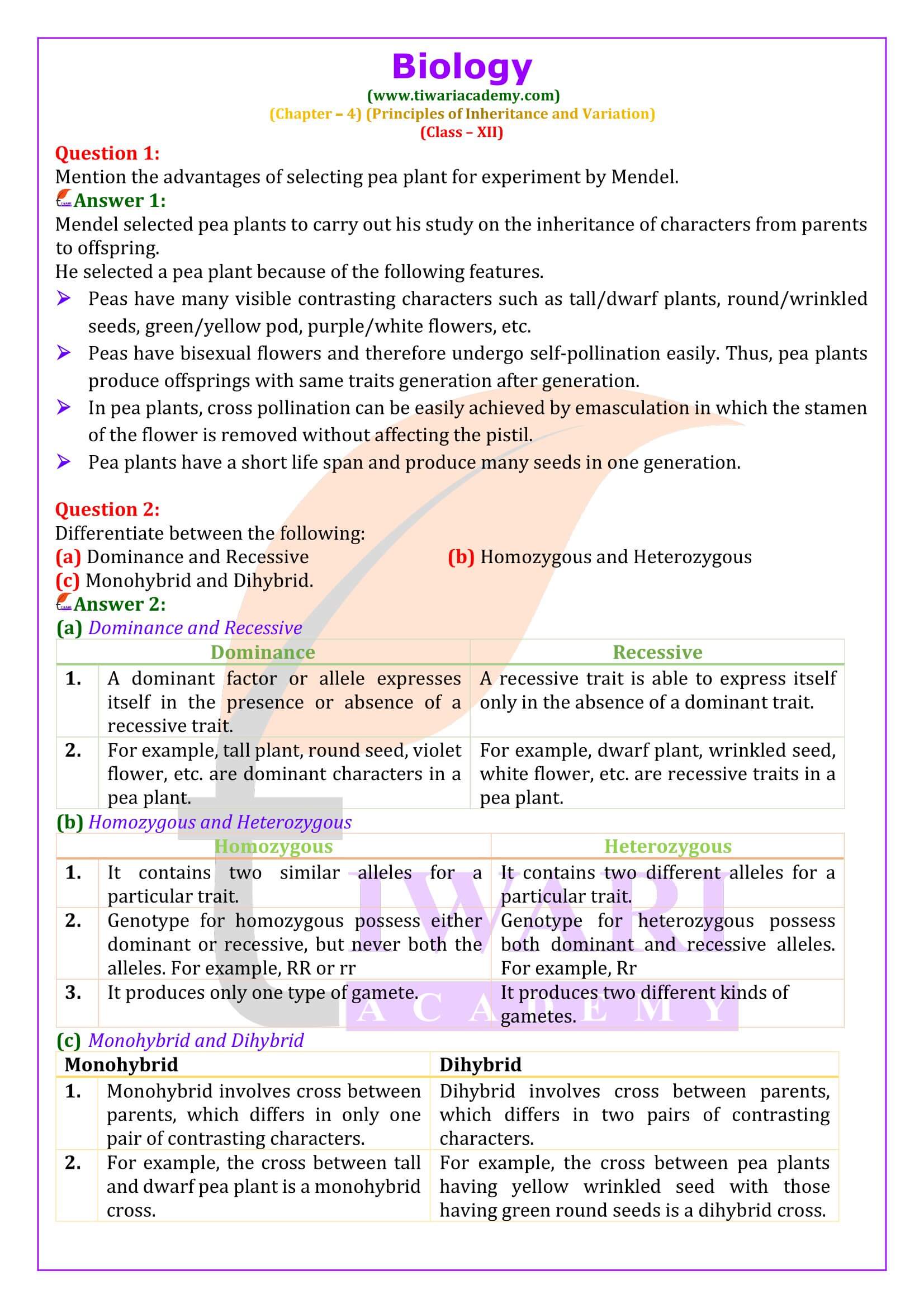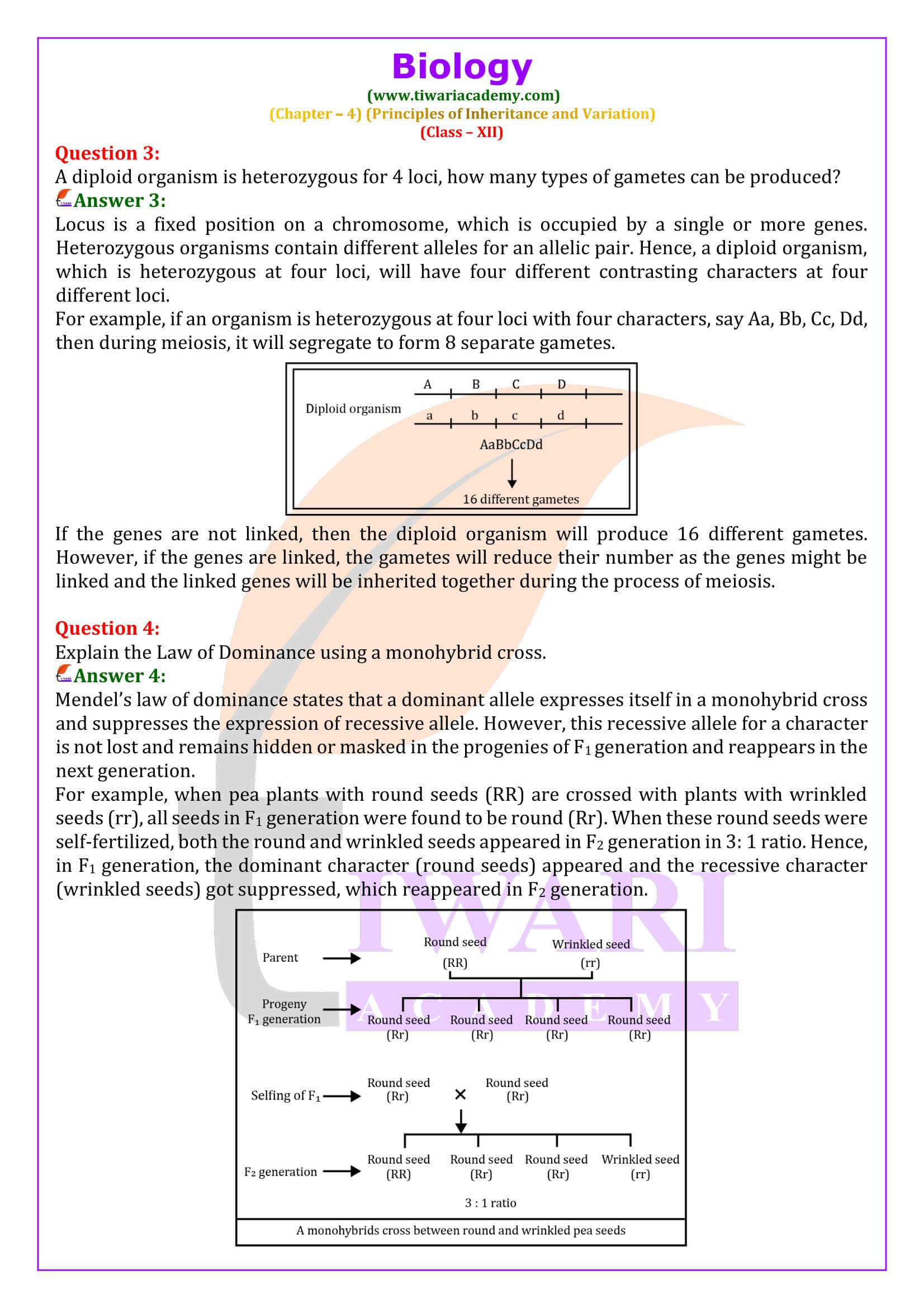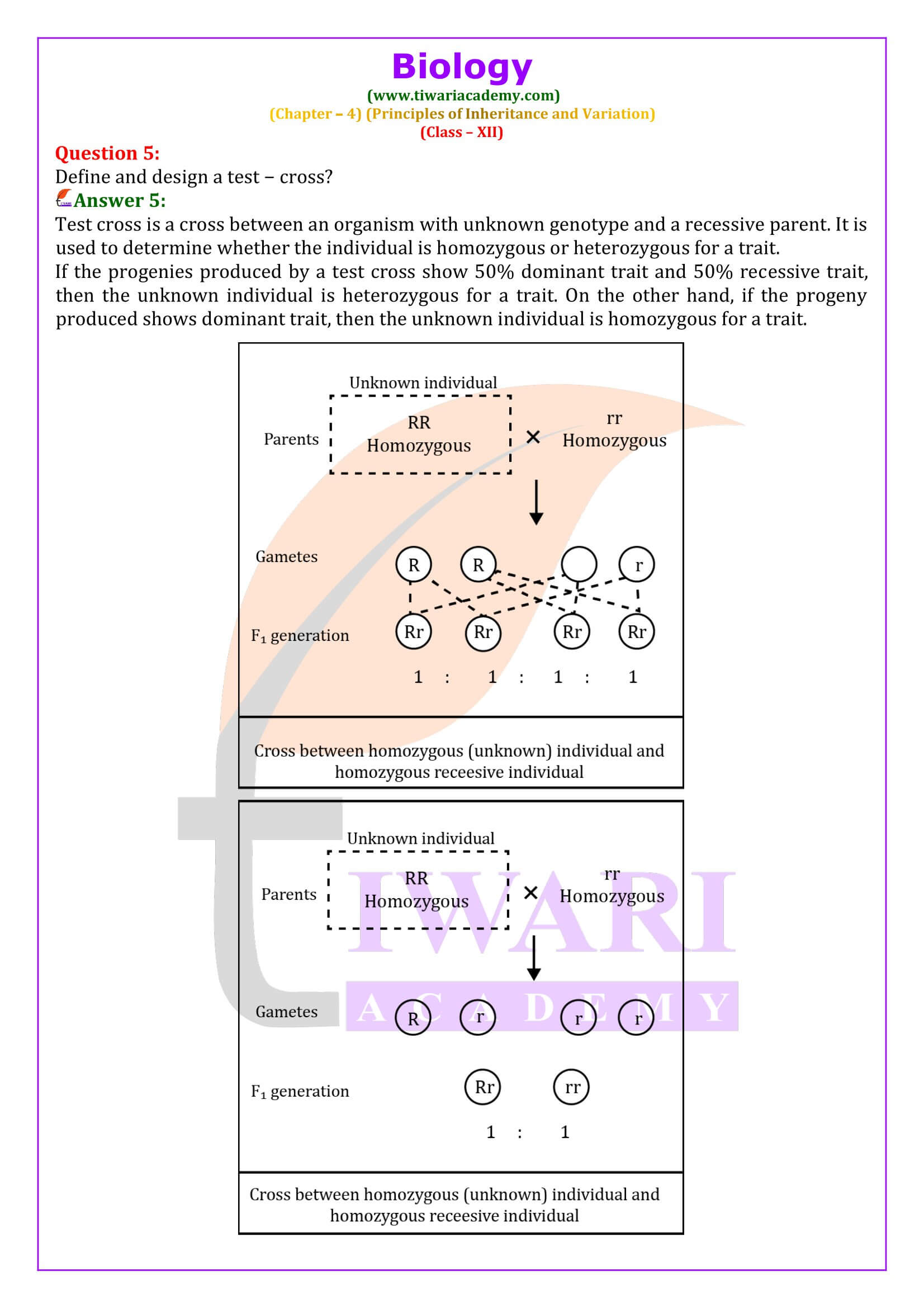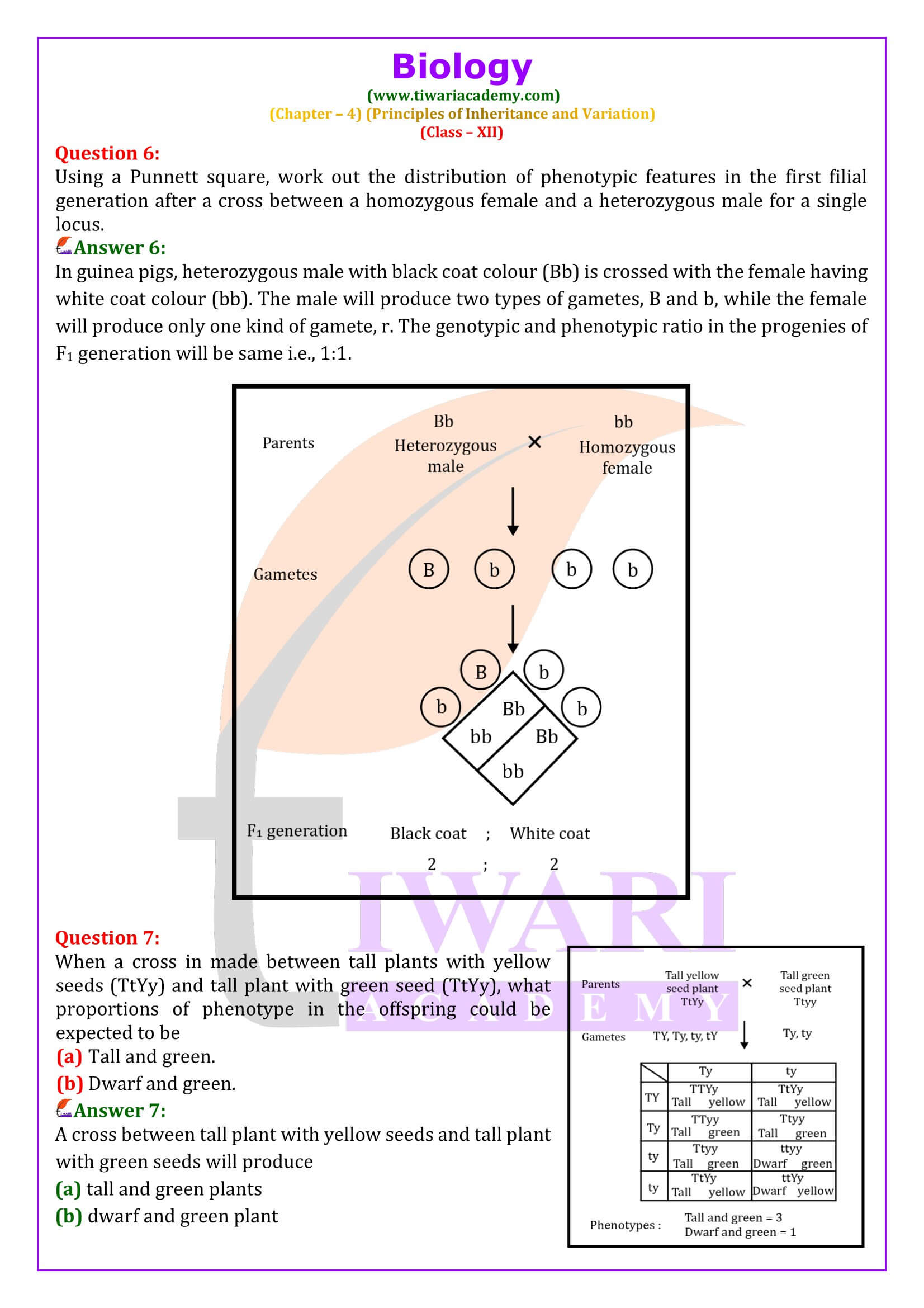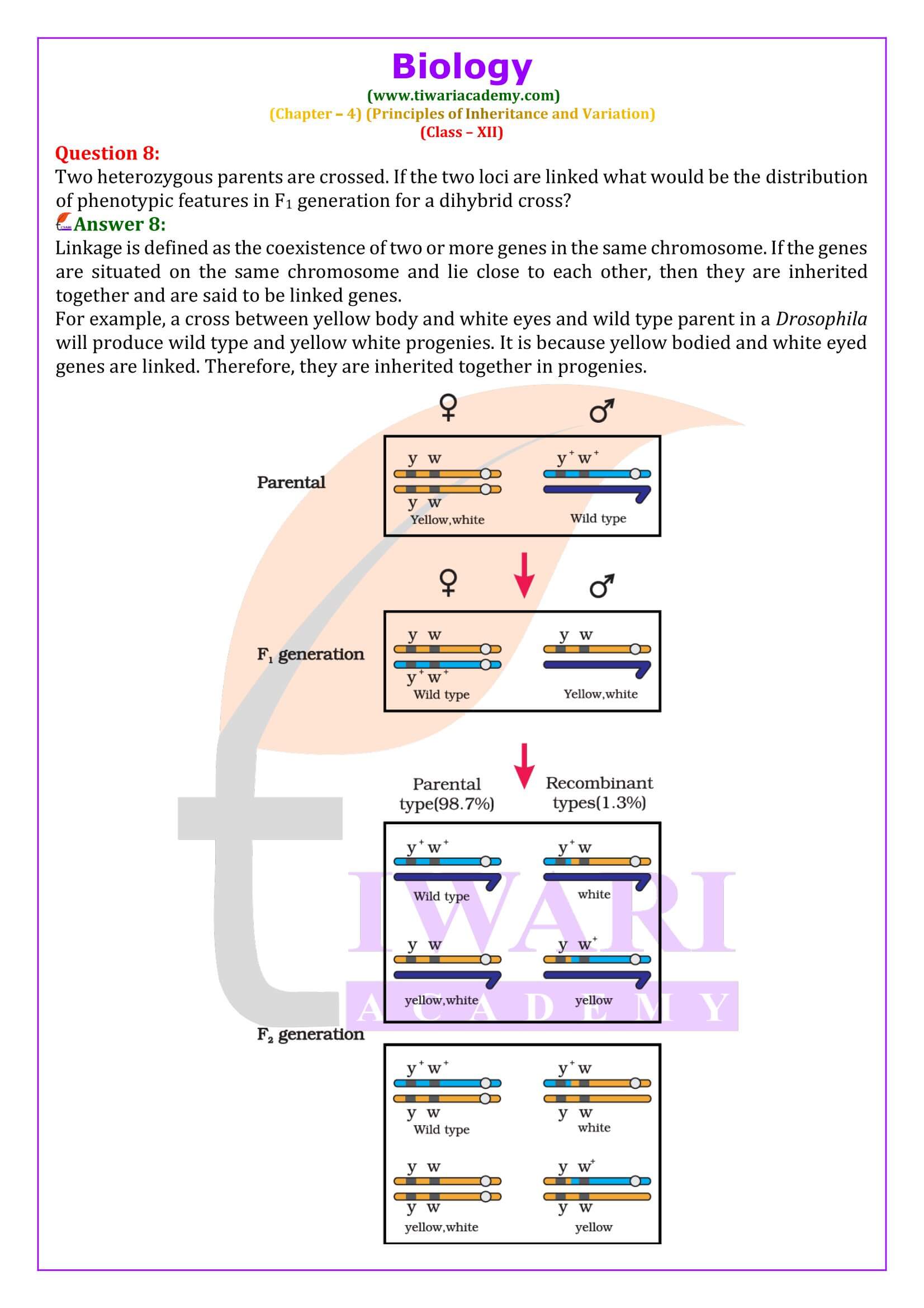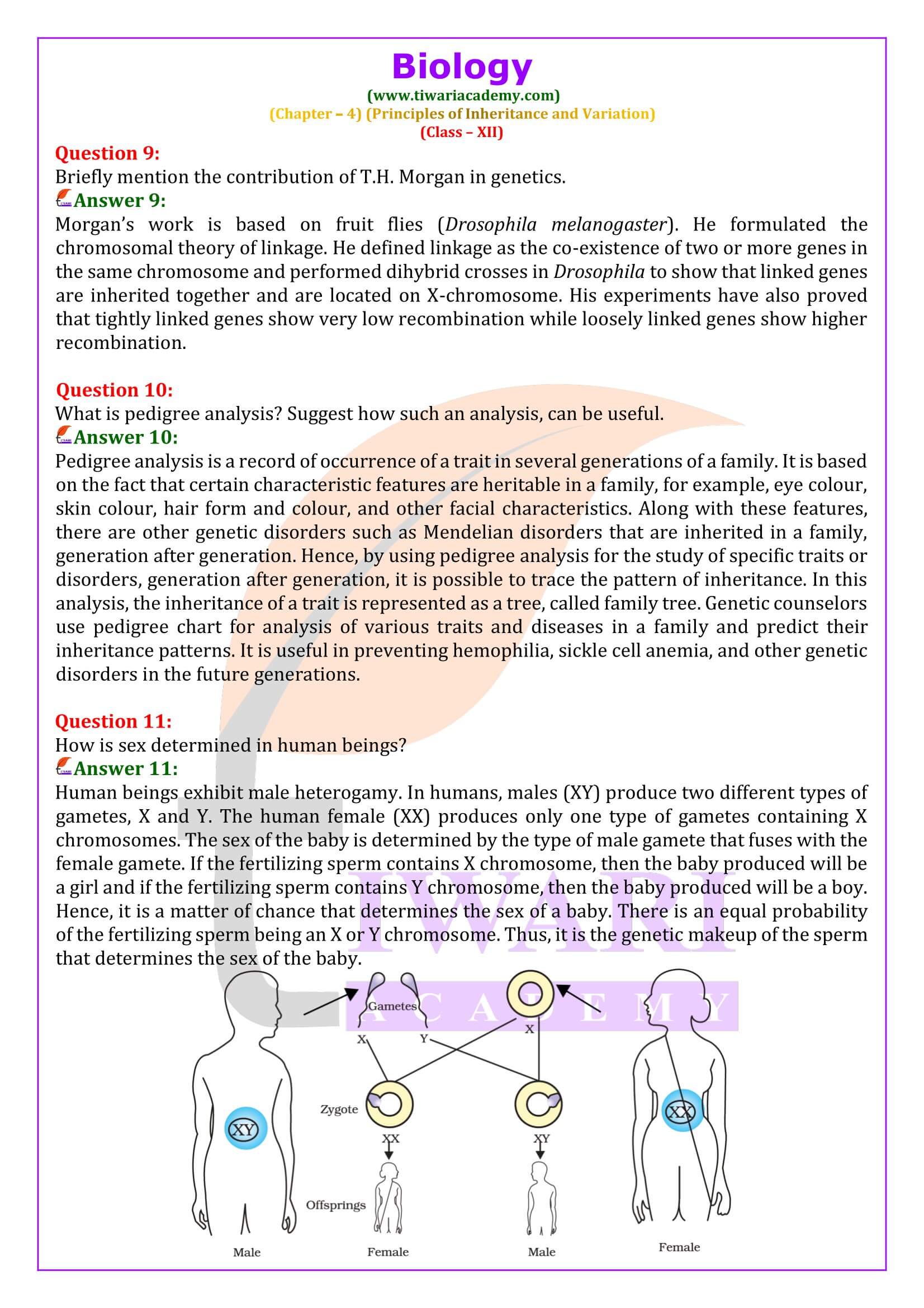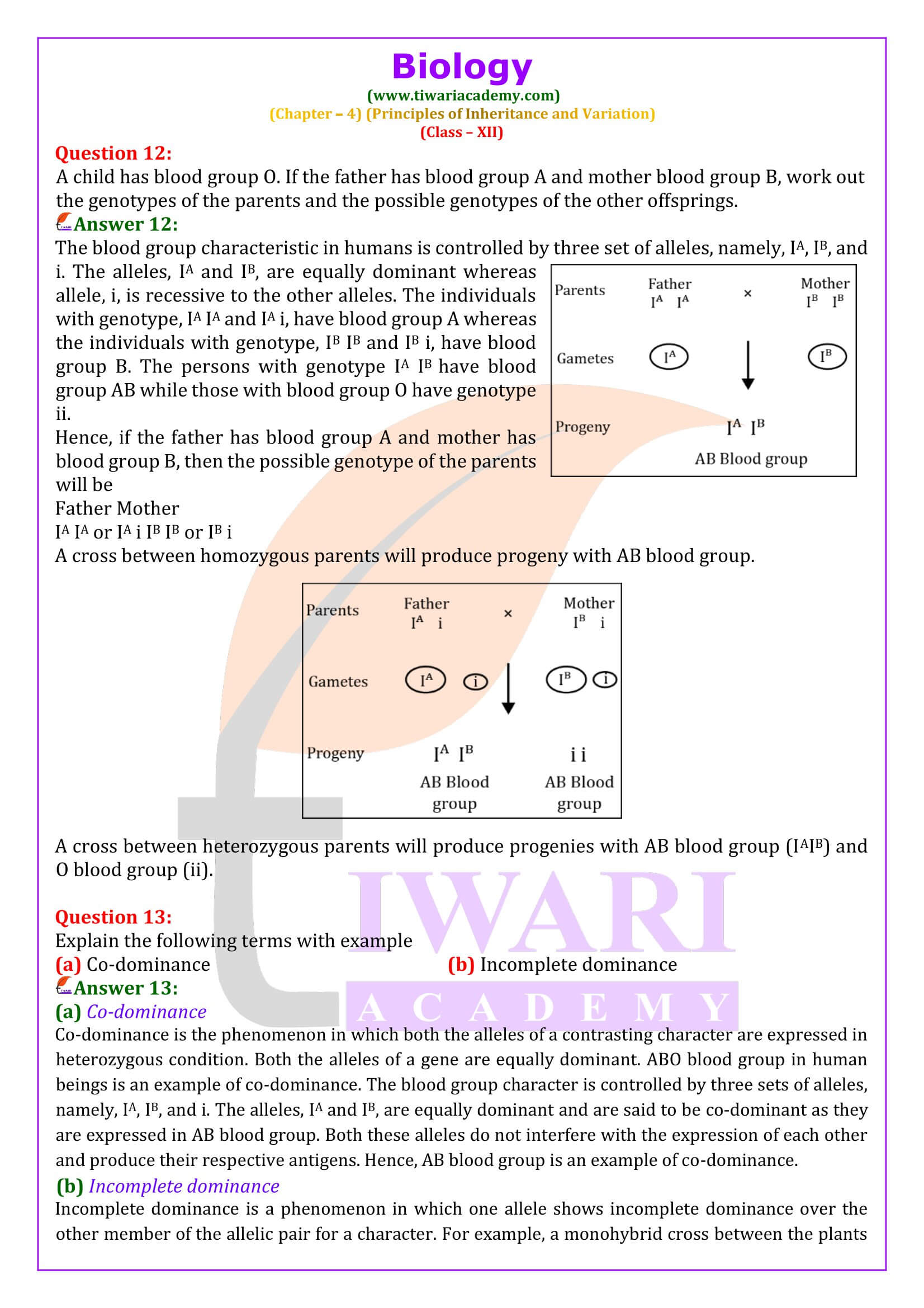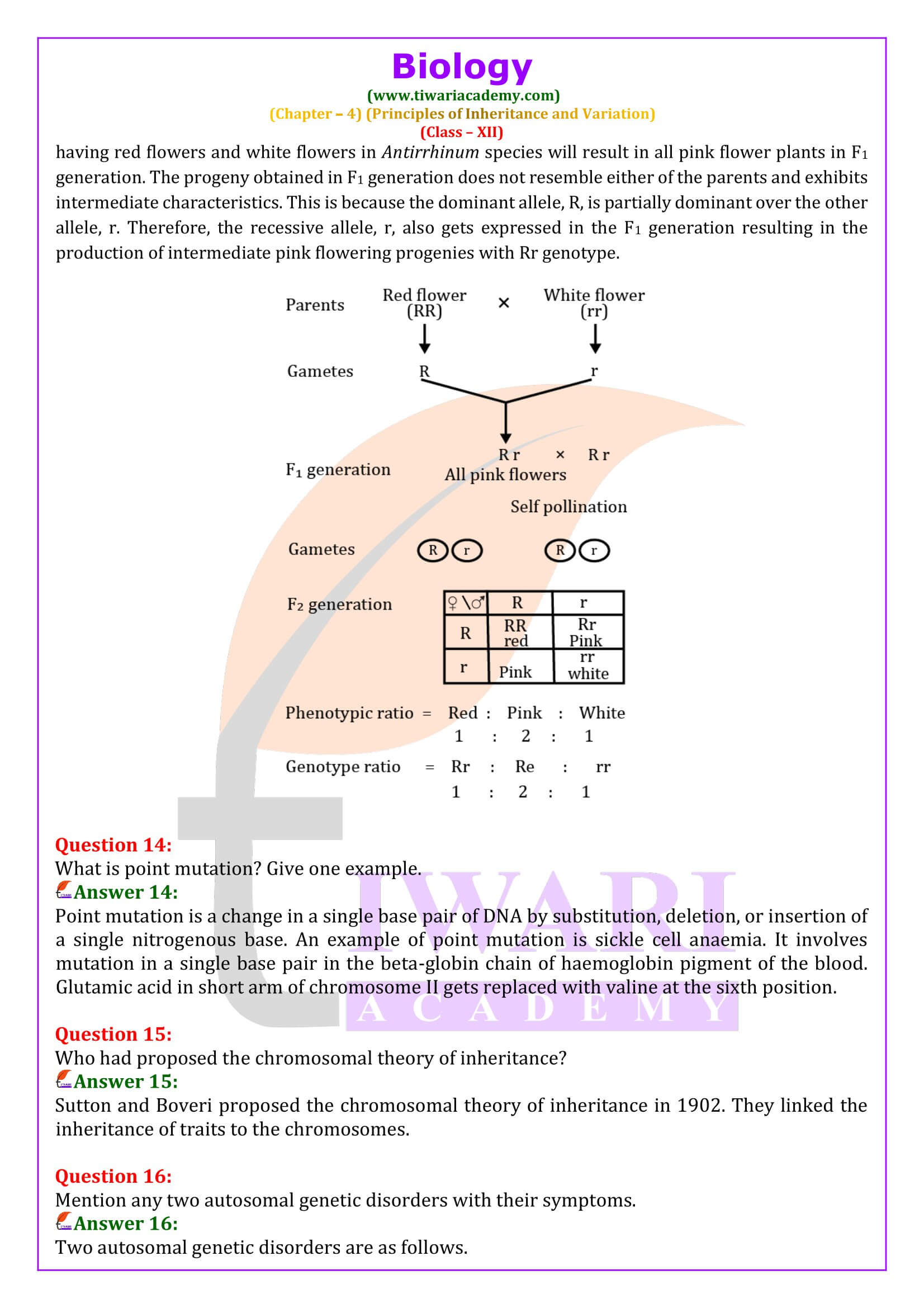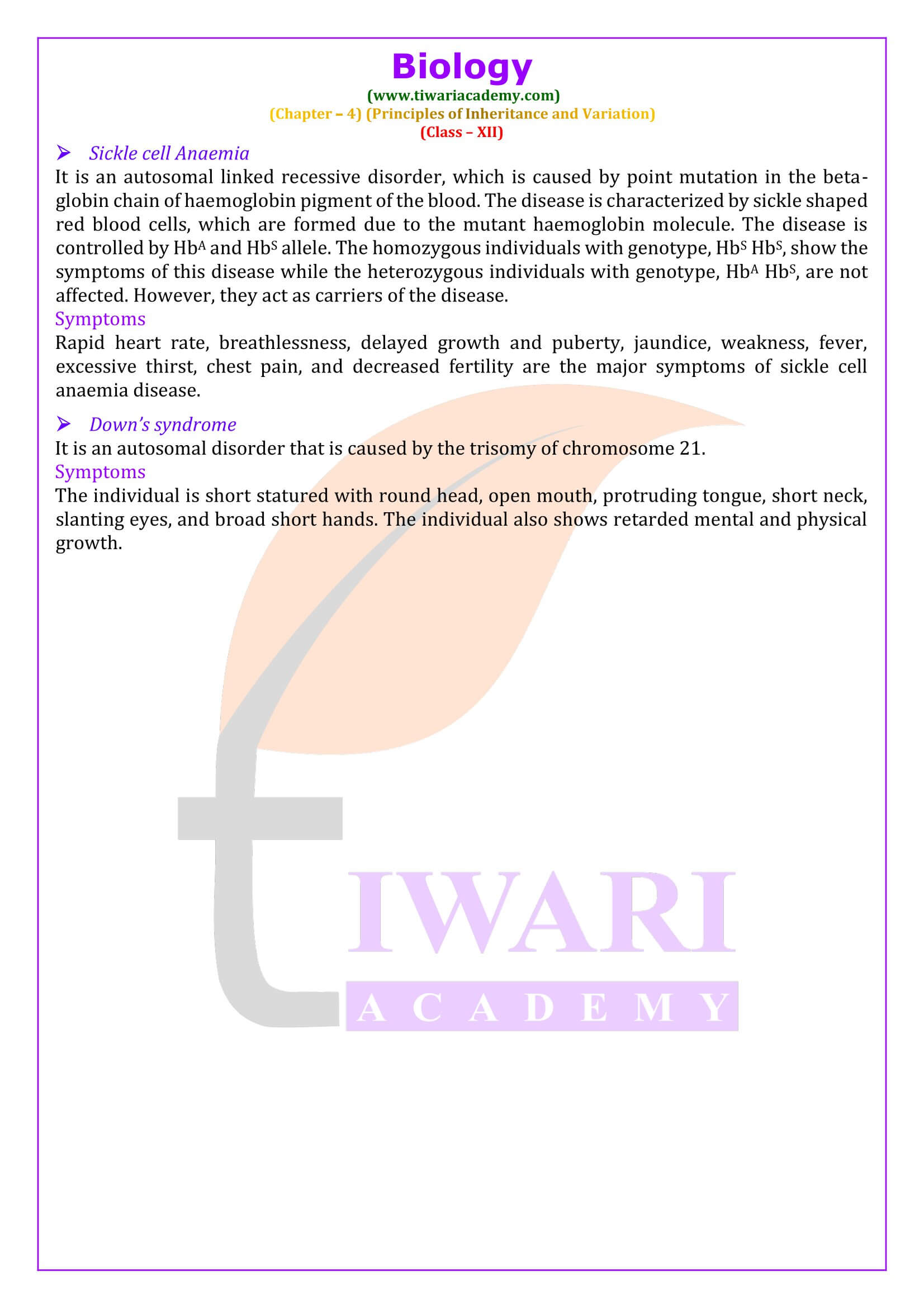NCERT Solutions for Class 12 Biology Chapter 4 Principle of Inheritance and Variation in Hindi and English Medium to Study Online for the academic session 2024-25 for all boards who are using NCERT Books 2024-25. NCERT Books are based on latest CBSE Syllabus is given to download for all the subjects.
NCERT Solutions for Class 12 Biology Chapter 4
Class 12 Biology Chapter 4 Principle of Inheritance and Variation Solutions
| Class: 12 | Science |
| Subject: | Biology |
| Chapter 4: | Principle of Inheritance and Variation |
| Mode of Content: | Images, Text and Videos |
| Academic Year: | Session 2024-25 |
| Medium: | Hindi and English Medium |
Class 12 Biology Chapter 4 Solutions in English
NCERT Solutions for Class 12 Biology Chapter 4 Principle of Inheritance and Variation is given here to download in PDF as well as use online free. NCERT Solutions are updated according to latest NCERT Books 2024-25 following the new CBSE Syllabus.
Extra Questions Class 12 Biology Chapter 4
What do you understand by Law of Independent Assortment?
In the inheritance of two pairs of contrasting characters (dihybrid cross) the factors of each pair of characters segregate independently of the factors of the other pair of characters.
What is Chromosomal Theory of Inheritance?
Chromosomal Theory of Inheritance: Proposed by Sutton and Boveri. The pairing and separation of a pair of chromosomes would lead to the segregation of a pair of factors they carried. They united the knowledge of segregation with Mendelian principles.
What is meant by Pleiotropy?
The ability of a gene to have multiple phenotypic effects because it influences a number of characters simultaneously is known as pleiotropy. The gene having a multiple phenotypic effect because of its ability to control expression of a number of characters is called pleiotropic gene. E.g. in Garden Pea, the gene which controls the flower colour also controls the colour of seed-coat and presence of red spot in the leaf axis.
Important Terms related to Chapter 4
1. Phenotype: The observable or external characteristics of an organism.
2. Genotype: The genetic constitution of an organism.
3. Aneuploidy: The phenomenon of gain or loss of one or more chromosome(s), that results due to failure of separation of homologous pair of chromosomes during meiosis.
4. Trisomy: The condition in which a particular chromosome is present in three copies in a diploid cell/nucleus.
5. Male heterogamety: When male produces two different types of gametes/sperms e.g., In human beings X and Y.
6. Female Heterogamety: When female produces two different types of gametes/ova, e.g., female bird produces Z and W gametes.
Law of Dominance
When two individuals of a species differing in a pair of contrasting characters/traits are crossed, the trait that appears in the F1 generation is dominant and the alternate from that remain hidden, is called recessive.
Law of Segregation (law of purity of gametes): The members of allelic pair that remained together in the parent, segregate/separate during gamete formation and only one of the factors enters a gamete.
What is point mutation? Give one example.
Point mutation is a change in a single base pair of DNA by substitution, deletion, or insertion of a single nitrogenous base. An example of point mutation is sickle cell anaemia. It involves mutation in a single base pair in the beta-globin chain of haemoglobin pigment of the blood. Glutamic acid in short arm of chromosome II gets replaced with valine at the sixth position.
Important Questions on 12th Biology Chapter 5
Mention the advantages of selecting pea plant for experiment by Mendel.
Mendel selected pea plants to carry out his study on the inheritance of characters from parents to offspring. He selected a pea plant because of the following features. Peas have many visible contrasting characters such as tall/dwarf plants, round/wrinkled seeds, green/yellow pod, purple/white flowers, etc. Peas have bisexual flowers and therefore undergo self-pollination easily. Thus, pea plants produce offsprings with same traits generation after generation. In pea plants, cross pollination can be easily achieved by emasculation in which the stamen of the flower is removed without affecting the pistil. Pea plants have a short life span and produce many seeds in one generation.
Briefly mention the contribution of T.H. Morgan in genetics.
Morgan’s work is based on fruit flies (Drosophila melanogaster). He formulated the chromosomal theory of linkage. He defined linkage as the co-existence of two or more genes in the same chromosome and performed dihybrid crosses in Drosophila to show that linked genes are inherited together and are located on X-chromosome. His experiments have also proved that tightly linked genes show very low recombination while loosely linked genes show higher recombination.
What is pedigree analysis? Suggest how such an analysis, can be useful.
Pedigree analysis is a record of occurrence of a trait in several generations of a family. It is based on the fact that certain characteristic features are heritable in a family, for example, eye colour, skin colour, hair form and colour, and other facial characteristics. Along with these features, there are other genetic disorders such as Mendelian disorders that are inherited in a family, generation after generation. Hence, by using pedigree analysis for the study of specific traits or disorders, generation after generation, it is possible to trace the pattern of inheritance. In this analysis, the inheritance of a trait is represented as a tree, called family tree. Genetic counselors use pedigree chart for analysis of various traits and diseases in a family and predict their inheritance patterns. It is useful in preventing hemophilia, sickle cell anemia, and other genetic disorders in the future generations.
Explain the term Co-dominance with example.
Co-dominance: Co-dominance is the phenomenon in which both the alleles of a contrasting character are expressed in heterozygous condition. Both the alleles of a gene are equally dominant. ABO blood group in human beings is an example of co-dominance. The blood group character is controlled by three sets of alleles, namely, IA, IB, and i. The alleles, IA and IB, are equally dominant and are said to be co-dominant as they are expressed in AB blood group. Both these alleles do not interfere with the expression of each other and produce their respective antigens. Hence, AB blood group is an example of co-dominance.
Who had proposed the chromosomal theory of inheritance?
Sutton and Boveri proposed the chromosomal theory of inheritance in 1902. They linked the inheritance of traits to the chromosomes.
Mention any any autosomal genetic disorders with their symptoms.
Sickle cell Anaemia It is an autosomal linked recessive disorder, which is caused by point mutation in the beta-globin chain of haemoglobin pigment of the blood. The disease is characterized by sickle shaped red blood cells, which are formed due to the mutant haemoglobin molecule. The disease is controlled by HbA and HbS allele. The homozygous individuals with genotype, HbS HbS, show the symptoms of this disease while the heterozygous individuals with genotype, HbA HbS, are not affected. However, they act as carriers of the disease. Symptoms Rapid heart rate, breathlessness, delayed growth and puberty, jaundice, weakness, fever, excessive thirst, chest pain, and decreased fertility are the major symptoms of sickle cell anaemia disease.
